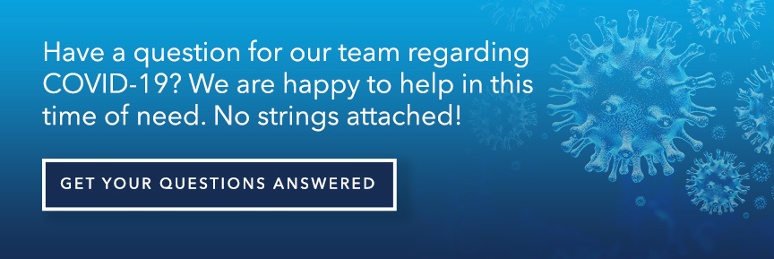Topic Business Performance,
4 Ways to Access Employee Assistance Programs
.jpeg)
March 31, 2020 | By Questco
.jpeg)
An Employee Assistance Program (EAP for short) is a benefits program that employers offer to their employees. This program typically involves counseling services designed to help employees cope with personal and work-related problems.
During the COVID-19 pandemic, EAPs are an important component in promoting employee wellness. The coronavirus outbreak has led to an increase in mental stress across all industries. In some cases, the fears and anxieties associated with this global health crisis may exacerbate pre-existing conditions, such as OCD or PTSD.
In addition, many employees may need coaching on how best to adjust to a remote work environment. For example, some workers may struggle with maintaining healthy eating habits, a regular exercise regimen, and effective time management.
Types of EAP
There are 3 basic types of EAPs available on the market today. These are:
- Individual services
- Managerial/supervisory training
- Organizational services
Individual Services
Individual services may include assessments for physical and mental health and referrals to benefit providers (such as physicians or professional counselors). This can include guidance on where and how to access self-help resources.
Managerial/Supervisory Training
An EAP may also include manager-specific training and continuing education. For instance, an EAP may provide guidance for supervisors on how to appropriately support their team members during times of stress and anxiety.
Organizational Services
An EAP may also be implemented on a company-wide scale, such as through advance planning initiatives for crisis events, educational programs available to all employees, and help lines for continued support.
A company's EAP may encompass one or more of the categories mentioned above.
How to Access Employee Assistance Programs
The method of accessing an EAP is largely dependent on the EAP's delivery model. There are 3 common delivery models that today's organizations utilize:
- External EAP. The external model consists of the company partnering with a 3rd party vendor. This vendor exclusively provides the education and benefits of the EAP for company employees.
- Internal EAP. As the name suggests, the internal EAP model is the opposite of its external counterpart: the company employs all counselors and professionals involved in the EAP as internal staff. Thus, in this model, an employee could reach out to a mental health counselor within the company instead of setting up an appointment with a 3rd party counseling agency.
- Blended EAP. This is a hybrid approach that combines elements of both external and internal EAP. In many cases, the company with a blended EAP will have a dedicated EAP manager on payroll, and one or more external vendors to provide service at multiple locations.
With these 3 delivery models in mind, let's examine 4 ways to access EAPs:
Embedded EAP Directly from Health Insurance Provider
Many health insurance providers offer an "embedded EAP" as part of a bundled package. Many employers may find this option attractive for its low cost and relative simplicity.
However, this option may not be effective without the watchful oversight of an internal EAP administrator. Problems include the fact that:
- EAP implementation is not a core competency for most health insurance providers
- If employees have the option to choose an employer-sponsored plan that does not include embedded EAP, then many team members may not be able to access the program
- Many health insurance providers offer a "one size fits all" EAP without training participating employees on how to access certain features
EAP Vendors
Third party EAP vendors are another common access point for employees. A good EAP vendor will likely manifest the following attributes:
- Focus on EAP services as a standalone product
- Ability to provide a variety of counseling services to participating employees
- Consultation capabilities to coach company management on behavioral, mental health, and emotional issue resolution in the workplace
Many EAP vendors subscribe to the "Affiliate Network Model" of EAP delivery, in which several EAP providers partner with a single vendor. The vendor then acts as a de facto broker or administrator for the end customer.
Management-Sponsored EAPs
Employees may also access counseling services through a management-sponsored EAP. This type of EAP requires both staff certification from the International Employee Assistance Professionals Association (EAPA), as well as the designation of an internal EAP administrator. In this model, the employer directly employs all professionals associated with the program.
Professional Employer Organizations (PEOs)
A fourth potential EAP access point for employees is via a company's PEO partner. When a company signs on with a PEO, employees can begin receiving EAP services at once, without a long application process. A PEO also has the capacity to handle EAP administration, resulting in a streamlined, cost-effective alternative to in-house delivery.
Using an EAP to Help Your Employees Cope with Stress
As COVID-19 continues to spread around the globe, it is vital that employers focus on providing holistic support to their workforce. While regular health benefits remain a critical part of overall employee wellness, the mental and emotional toll that a pandemic may take on your workers should not be ignored. An employee assistance program is one excellent way to keep your employees focused and productive while working remotely.
Should mental health counseling be required, an EAP's infrastructure will enable you to promptly refer your team members to the appropriate provider.
Partnering with a PEO for your EAP needs offers a winning combination of cost-effectiveness and quality. Be sure you can access an EAP during this time of crisis, because by doing so you will also be investing in your most valuable resource: your employees.



